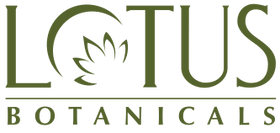
Niacinamide for skin inflammation is a proven solution for calming redness and irritation. This vitamin B3 derivative supports the skin's barrier and helps regulate inflammatory processes, making it an excellent choice for those struggling with acne, rosacea, eczema, or general sensitivity. By reinforcing skin resilience, niacinamide can visibly improve comfort and appearance.
Selecting the right niacinamide product depends on your skin type and daily routine. Serums, such as the Papaya & Niacinamide Brighten & Glow Skin Clarifying Super Serum, are lightweight and ideal for oily or combination skin, absorbing quickly and layering easily under moisturizer. For those seeking added sun protection and calming benefits, the Carrot & Niacinamide Glow and De-Tan Mineral Sunscreen SPF 50+ is a smart choice for daily outdoor exposure and sensitive skin.
Niacinamide works well with most skincare ingredients. For best results, apply niacinamide serum after cleansing and before moisturizer or sunscreen. It pairs effectively with hyaluronic acid for hydration, vitamin C for brightening, and gentle exfoliants. If using actives like retinol or salicylic acid, layer niacinamide first to help buffer potential irritation.
While aloe vera, green tea, and chamomile are popular for calming skin, niacinamide offers broader benefits by addressing inflammation, strengthening the barrier, and balancing oil. If you’re deciding between these ingredients, consider niacinamide for its multi-tasking properties and suitability for various skin concerns.
Most people tolerate niacinamide well, but those with extremely reactive or allergy-prone skin should patch test before regular use. If you experience persistent irritation, discontinue and consult a dermatologist. Avoid combining niacinamide with products containing high concentrations of acids in the same routine unless directed by a professional.
Consistent use of niacinamide can lead to noticeable improvements in redness, texture, and clarity within 2–4 weeks. Begin with a lower concentration if your skin is sensitive, and introduce it gradually to minimize the chance of irritation. Pair with a gentle cleanser and non-comedogenic moisturizer for optimal results.
At Lotus Botanicals, we offer a curated selection of vegan, cruelty-free skincare solutions including niacinamide serums, mineral sunscreens, and clarifying gels for inflamed and sensitive skin. Visit Lotus Botanicals to explore our full range and find the right products for your skin needs.
1. What is niacinamide and how does it help with skin inflammation?
Niacinamide is a form of vitamin B3 that helps reduce skin inflammation by blocking immune chemicals that cause redness and swelling. It's widely used to calm irritated skin and improve overall skin health.
2. Can niacinamide be used for acne-related skin inflammation?
Yes, niacinamide is effective for acne-related skin inflammation. It reduces redness, soothes irritated skin, and helps regulate oil production, making it ideal for acne-prone complexions.
3. Is niacinamide suitable for sensitive skin?
Niacinamide is generally well-tolerated and suitable for sensitive skin. Its anti-inflammatory properties help minimize irritation, but it's always wise to patch test before full application.
4. How long does it take to see results from niacinamide for skin inflammation?
Most people notice improvements in redness and irritation within 2–4 weeks of consistent niacinamide use. Optimal results may require ongoing application as part of your daily routine.
5. Can niacinamide be combined with other skincare ingredients for inflammation?
Niacinamide pairs well with ingredients like hyaluronic acid, vitamin C, and gentle exfoliants. It can also be used alongside salicylic acid and botanical extracts for enhanced soothing benefits.
6. Are there any side effects of using niacinamide for skin inflammation?
Niacinamide is considered safe for most skin types, but rare side effects like mild irritation or flushing can occur. Starting with a lower concentration and patch testing can help minimize risk.
7. Does niacinamide help with conditions like rosacea or eczema?
Niacinamide may help reduce redness and discomfort associated with rosacea and eczema due to its anti-inflammatory and barrier-strengthening effects. Consult a dermatologist for severe cases.
8. What concentration of niacinamide is best for treating skin inflammation?
Products with 2–10% niacinamide are commonly recommended for treating skin inflammation. Higher concentrations may not offer additional benefits and could increase risk of irritation for sensitive skin.
9. What niacinamide products does Lotus Botanicals offer for skin inflammation?
Lotus Botanicals offers products like the Papaya & Niacinamide Brighten & Glow Skin Clarifying Super Serum and Carrot & Niacinamide Glow and De-Tan Mineral Sunscreen, both designed to calm and protect inflamed skin.
10. How can I purchase niacinamide skincare solutions from Lotus Botanicals?
You can shop for niacinamide serums and sunscreens directly on the Lotus Botanicals website. Visit Lotus Botanicals online to explore and buy products tailored for skin inflammation.
Phone : 1800 1200 36231
Email : care@lotusbotanicals.com
WhatsApp
: +917290031713
Free shipping on order above 599
Your payment information is processed securely.
Please beware of fraudulent messages and phone calls on behalf of Lotus Botanicals. We NEVER ask for bank details, OTPs, advance cash payments or engage in lotteries.